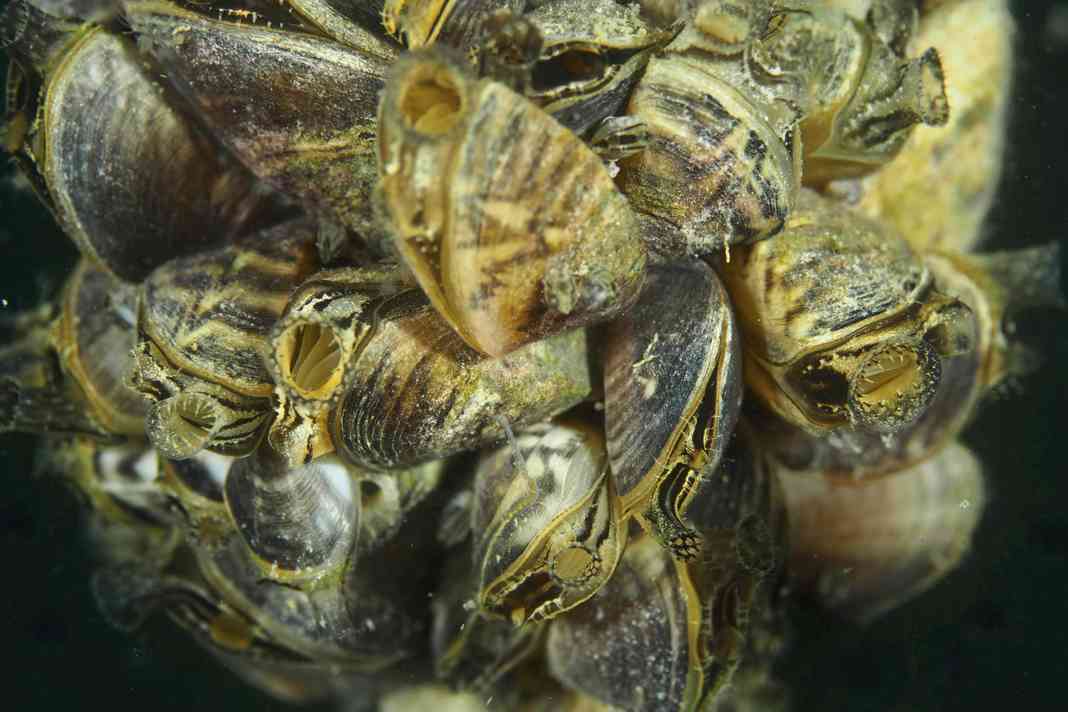


While invasive species such as the "Teredo Navalis" drilling mussel are causing concerns for harbour operators and boat owners on the German coast, there is great fear of the quagga mussel in the south. Among other things, it attaches itself en masse to boat hulls. In some Swiss cantons, measures have therefore been taken to prevent the spread of the shellfish. One of these is the new ship reporting and cleaning obligation (SMRP).
It forces owners who want to move their boat from one lake to another - for example to take part in regattas - to notify the relevant authorities in advance. They must also have the underwater hull professionally cleaned. For this purpose, companies have been specially certified that have the appropriate washing stations, such as the five Kibag marinas across the country. Their Managing Director Daniel Kallenbrunn explains: "We clean the boats with a high-pressure cleaner using water heated to at least 70 degrees. Apart from the hull, all parts that have come into contact with seawater and therefore potentially with the quagga mussel have to be cleaned." Rinsing the cooling water circuits of the engines is also a challenge. "Hot water at 70 degrees must also flow through the pipes for at least 15 minutes." According to Kallenbrunn, the measures are accepted by the sailors, even if the cleaning costs the equivalent of at least 320 euros each time. They also have no choice. "We only crane boats into the water if their owners present a certificate stating that they have been cleaned," says the marina manager.
This might also interest you:
What makes the quagga mussels a problem? "They are multiplying rapidly," explains scientist Dr Piet Spaak. He heads the "SeeWandel-Klima" project and is researching the spread of the species in Lake Constance. "Here in the lake, we find up to 30,000 mussels per square metre at depths of ten to 15 metres." Such large populations unbalance the ecosystem. "The deep pre-Alpine lakes offer the quagga mussel an ideal habitat. There is even enough oxygen for them at the bottom," says the expert. And while the mussels are largely eaten by ducks in Dutch waters, for example, there are many places of retreat for the quagga in the Swiss lakes and in Lake Constance at the appropriate depth.
"Anyone who takes a boat or even just a SUP board from one lake to another must clean and dry it thoroughly," emphasises Spaak. This is the only way to prevent other lakes from being contaminated with the quagga mussel.
Nevertheless, there is an accelerated SMRP procedure for regatta sailors. They are allowed to clean their boats themselves, provided the organiser provides a trained inspector. There is a table with four categories of boat types that have to go through an approval process. In addition, boats that have been in the water for a maximum of five days at a time are treated differently to those that have spent longer periods in the water. There are then three different release processes for the boats. The simplest is cleaning the boat yourself, which is then checked by a trained person from the organiser on arrival. The organiser must then report digitally that the boat has been cleaned prior to the regatta. The second stage is similar to the first, except that here the boat must have spent an additional five days drying ashore before it is put into the water. The third approval process involves professional cleaning by an authorised company. These measures are intended to prevent the quagga mussel and in particular its larvae from spreading further via the seawater.

